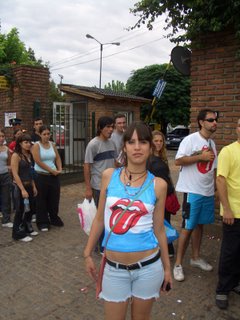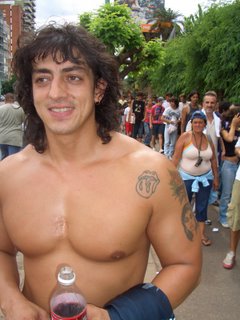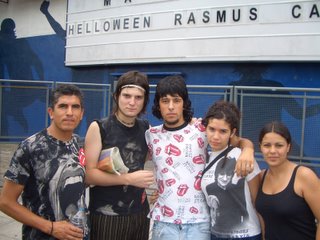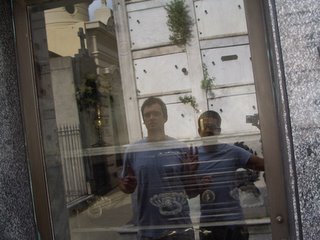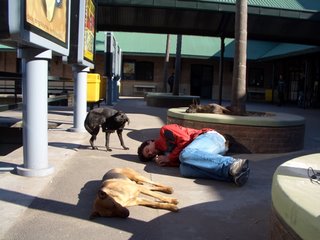
Perhaps it is the black Irish in me. I am certain of few things in life, but one of them is that I will never join a temperance union.
Last Thursday I concluded a two week wine-tasting course at the Centro de Enólogos de Buenos Aires (
http://www.centroenologos.com/). On Tuesday we had talked and tasted reds, including the burly, Argentine varietal Malbec; on Thursday it was sparkling wines. This was departure for me: I generally limit my annual bubbly consumption to sips from a bottle, straddling the old and new years. So depending on how you interpret the stats, I drink vino espumante once or twice a year.
As to be expected of an effervescent, final class, the mood was festive. Our four wines included one that instantly struck me as really, really tasty – a rare drink-from-a-glass kind of sparkling wine. When it was unveiled, I learned why: it was a
Rosell Boher from Mendoza that sells for $150 ($50 US).
At the end of class the four students, two enologists, and one hanger-on gathered at a table and polished off the Rosell.
The two enologists – Juan and Alfredo, both natives of the province of San Juan – invited us to a talk on home winemaking at the Center’s bodega, located in Luis Guillón, a town southwest of the capital.
On Saturday morning, I rode with Juan to the bodega. Along the way, he talked about the disaster that Argentina is (a favorite subject of Argentines, as you might recall from the entry “
Necrologistics”) and San Juan’s most famous son, the educator, writer, politician and ladies’ man, Domingo Faustino Sarmiento. Later, with Alfredo’s collaboration, Juan reminded me how President Sarmiento at one point had a torrid affair with the daughter of his Minister of the Interior, a girl some forty years his junior.
After a brief tour of the rustic equipment in the bodega, Juan gave a talk a handful of aspiring winemakers for about two hours.
I am ready to roll up my pants and start making vino patero with my bare feet, but I will spare you the details of a rather technical lecture.
By the time the talk ended, it was nearly one in the afternoon, so we sat down to empanadas. There were eight of us, I believe: the four attendees; Juan and Alfredo, Juan Carlos Gómez, the president of the Centro; and don Luis, the owner of the property where the Centro has established its cellar.
I had for the first time an empanada filled with mozzarella cheese, prunes, and pancetta. It was so good that for regularity’s sake, I helped myself to a second.
As we ate and conversed, Juan Carlos opened several bottles of wine: first a muscatel made from grapes grown in his backyard in Villa Urquiza, followed by the Centro’s own cabarnet, and finally a homemade sparkling wine made of the same muscatel grapes. There were all very enjoyable, served at precisely the right temperatures, per an enologists’ mania. Of course, I don’t know if they were objectively good, but in the pleasant company of the winemakers themselves, it was impossible not to like them.
Next we ate dessert: the very same muscatel grapes soaked in grappa and homegrown peaches in syrup. To wash this down, the increasingly animated enologists passed around walnut and blueberry liqueurs, limoncello and grappa, all homemade.
Finally, Don Luis, an amiable man in his eighties, took to his feet and made us coffee with beans that he ground as the rest of us continued chatting.
It was barely four by the time Juan dropped me off. I was feeling a powerful urge to take a siesta. As I got out of the car, Juan handed me a biography on Sarmiento called
Cuyano alborotador, which I liberally translate as
The Shit-stirrer from Cuyo. He promises that it narrates in great detail all of Don Domingo’s romantic indiscretions.

